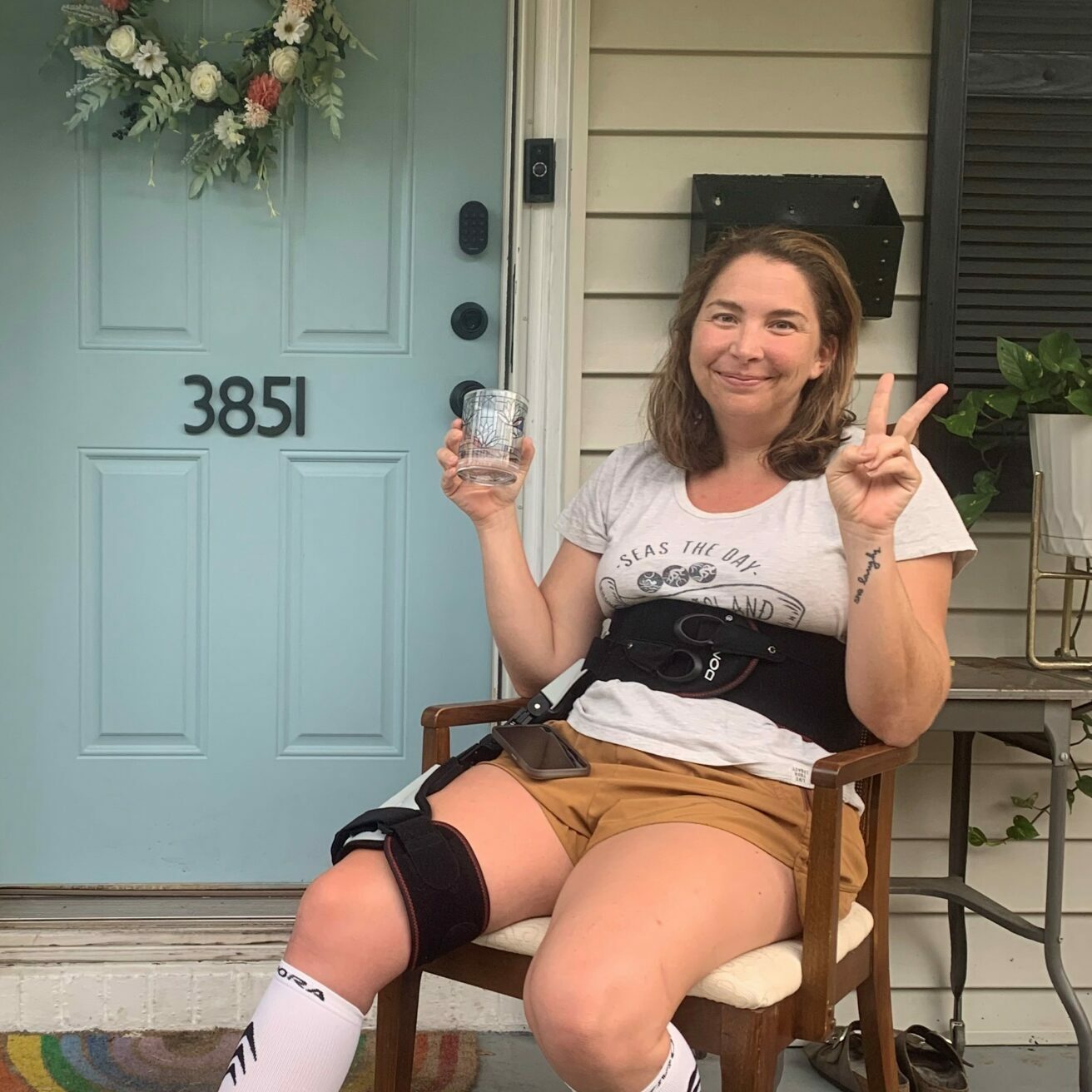When I went in for hip surgery to repair my labrum — a ring of cartilage in the hip that stabilizes and cushions the hip joint — I was excited. After two years of limited mobility, I couldn’t wait to get back to the active lifestyle I loved. I’d likely injured myself training for triathlons, but I kept active until surgery, feeling optimistic about my recovery.
The surgery went well, and I followed all the blood clot prevention protocols: compression stockings, calf squeezers, taking baby aspirin, and using a machine to keep my leg moving. Blood clots were mentioned briefly, but I didn’t think much of it. I’d never known anyone who had one.
A few days later, I started feeling terrible. I had sharp pain in my back but assumed it was from crutches or sleeping in the hip mover machine. My physical therapist suggested checking for a kidney infection, but the test came back clear. One night, I woke up shaking uncontrollably, unable to turn over because of the pain. I convinced myself it was normal post-surgery discomfort and decided to wait until morning to call my surgeon.
The next day, while brushing my hair, excruciating pain hit me, and I broke down crying. I called my surgeon, who immediately said to go to the hospital because he suspected blood clots.
At the hospital, my heart rate was over 130 beats per minute. A CT scan revealed multiple pulmonary emboli in my lungs and a pulmonary infarction, which explained my severe back pain.
In addition to my hip surgery, the estrogen-based contraception I was using is also believed to have contributed to my PE.
Through genetic testing, I found out I’m on the borderline for having antithrombin III deficiency. More testing is ahead, but the bottom line is this: blood clots can happen to anyone. I never thought it would be me.
If you take anything away from my story, let it be this: listen to your body, and don’t dismiss symptoms. Blood clots are serious, but catching them in time can save your life. If something feels off, get it checked out.
Resources
Hospitalization and Surgery
Women and Blood Clots
Athletes and Blood Clots




